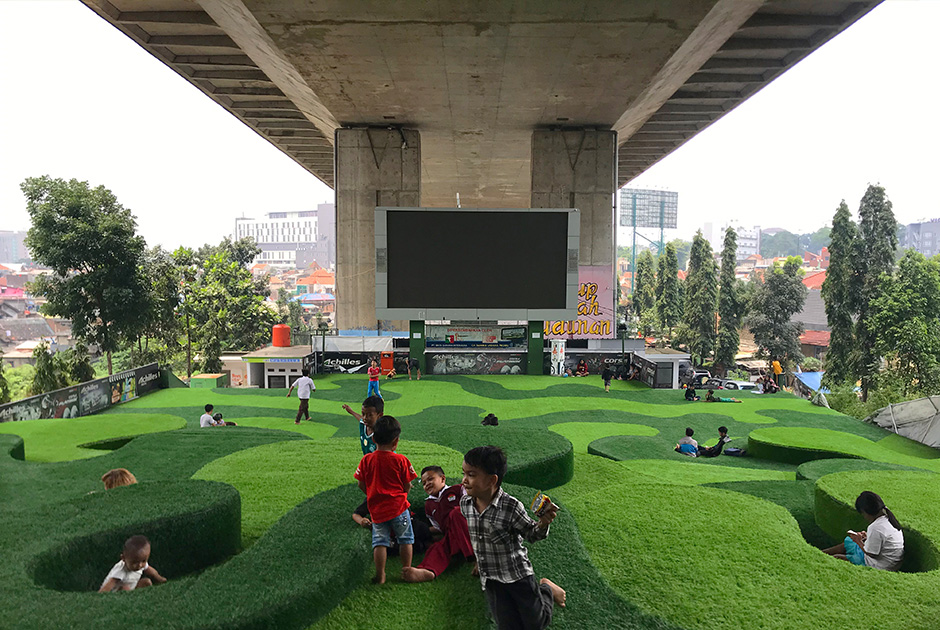
Keep up with our latest news and projects!

In 2013, the newly elected Mayor of Bandung and current Governor of West Java, Ridwan Kamil, initiated plans for Taman Film (Film Park) as one part of a linear chain of smaller, connected public spaces underneath the Pasupati overpass; an iconic cable-stayed bridge in Bandung, Indonesia. In previous years, there had been loose proposals put forward by local communities and students for the ‘abandoned’ space, but a lack of funding meant nothing was ever done. Such a pity for such a strategic location near urban villages in dire need of public spaces. Things started to change in Bandung under the governance of Ridwan Kamil – a trained architect with the backup of the creative community. With him as Mayor, the city started to develop better public space awareness.
Mayor Kamil envisioned a continuous chain of parks, which would provide direct pedestrian access from the city to the famous shopping street of Cihampelas and would suit the needs of many nearby communities. Jalan Pasupati is Bandung’s main traffic artery, connecting the city to the Jakarta toll road. It cuts straight through the residential areas of Tamansari, and the proposed chain of parks would reconnect them.
The first public space project in the chain is Taman Jomblo (‘Lonely Hearts Park’), an outdoor installation of colourful, single-seater concrete cubes, sketched as a creative response to a previous bureaucratic design with the same materials as budgeted. This is followed by a skate park; after which comes Taman Film; then a sports field for playing mini soccer; finally ending in a green park of a local kampung, or urban village, adjacent to the river.
Taman Film was intended to accommodate Bandung’s film community, who, until then, struggled to find facilities to screen movies or public spaces with adequate seating. In 2014, the mayor appointed SHAU to design the park. After a site survey in Bandung, the team worked on the design in SHAU’s Rotterdam office. Communication with contractors, potential users and the local government was made possible via their Jakarta team to ensure that the design would fit local needs and possibilities. Mayor Kamil sped up the design process, and after the schematic drawings were submitted, construction started immediately. The budget of 1,1 billion IDR (equivalent to €70,000in 2014) was financed by the corporate social responsibility (CSR) funding of two local companies.
Taman Film was completed and opened to the public in September 2014. The park is designed in such a way that it not only accommodates movie screenings for large audiences but also functions as a seating and activity landscape in between showings. The existing topography naturally descends towards the river. Therefore, it was more a question of how to model a stepping / seating landscape on one side, with a view of the screen on the other. Instead of a parallel stepping array of seating where people would sit shoulder to shoulder, curvilinear steps with different inner and outer radii were proposed. The intention was to give people pockets of different sized-spaces, or ‘rooms’, allowing for groups to have better conversations, and for individuals to have a more secluded experience.
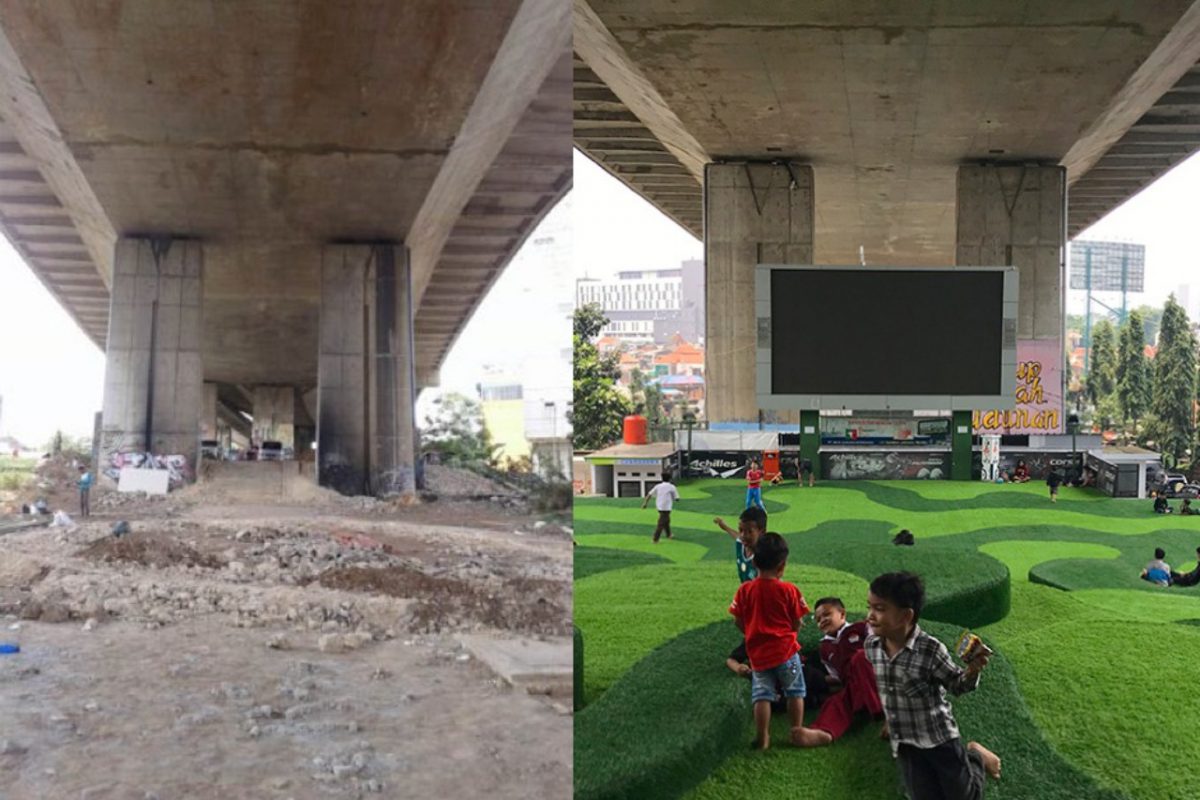
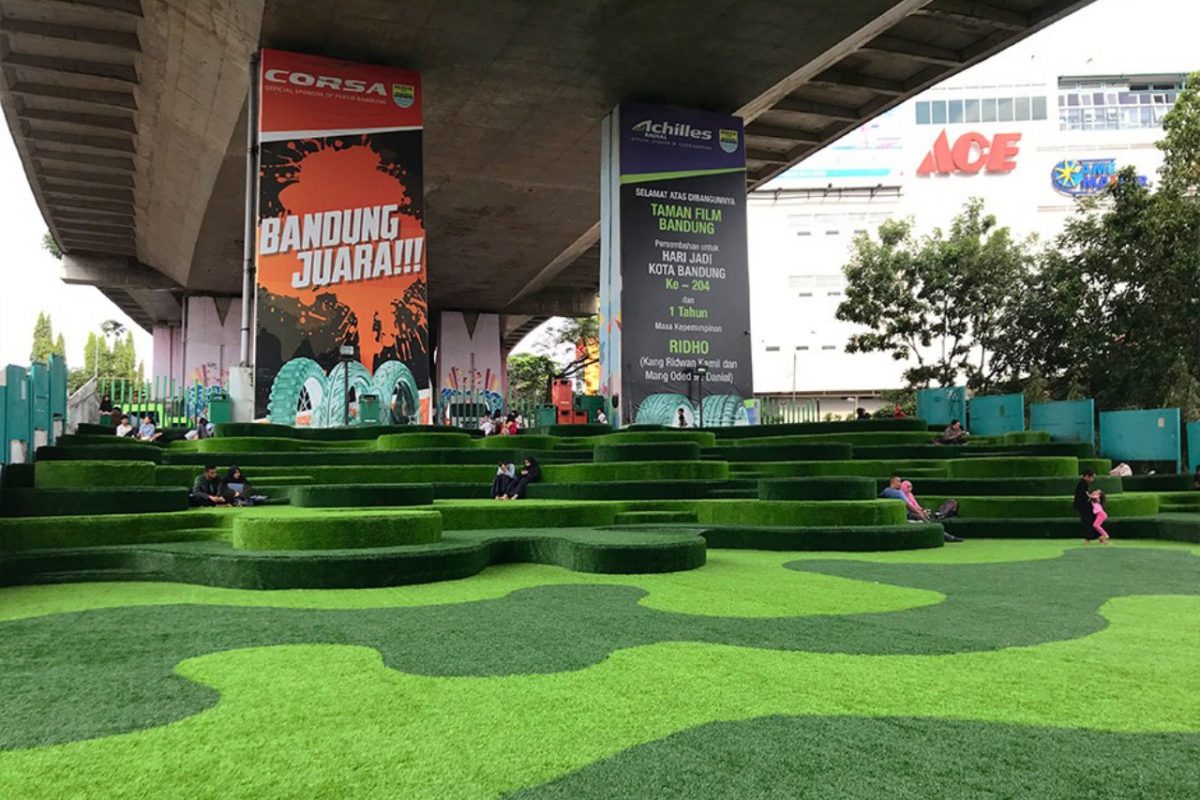
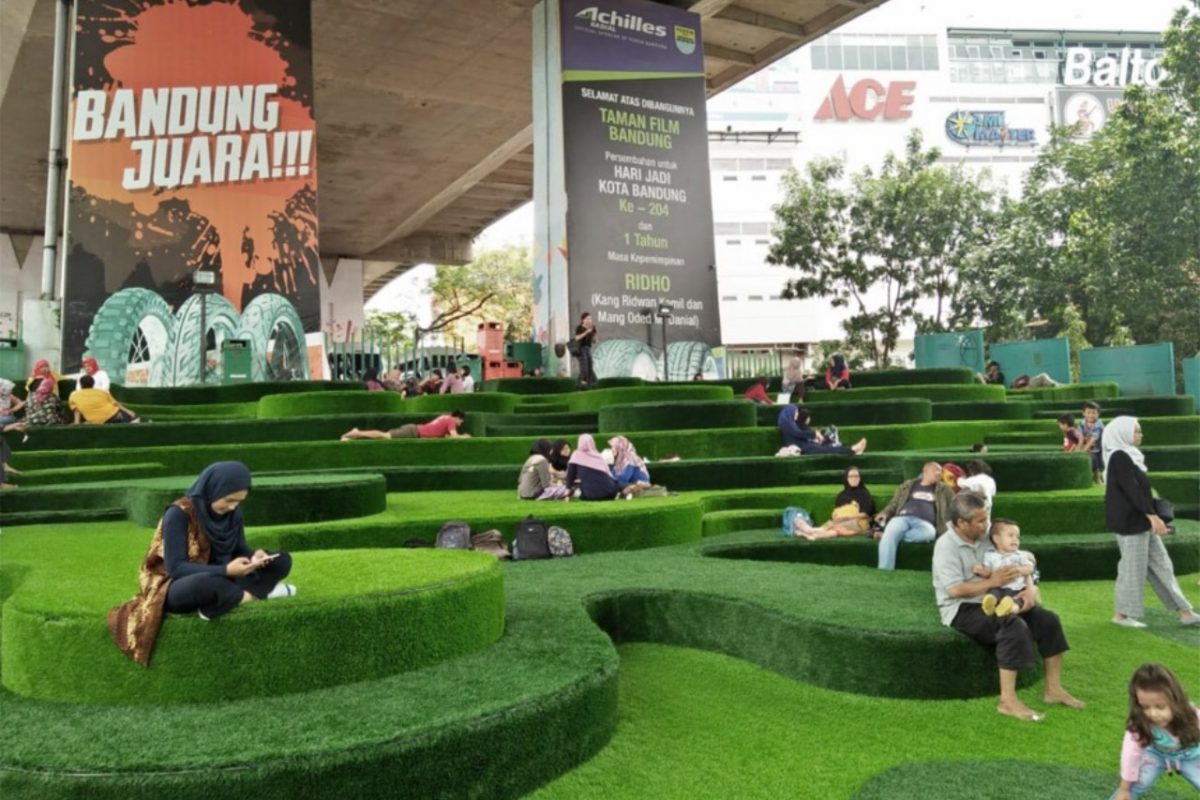
The city’s park department seems to give special attention to Taman Film in terms of maintenance and cleaning. In 2018, they organised to cover the whole park (including the seating landscape) in artificial grass. This was not part of the initial design intention, but with the different shades of green alternating between the curving seats, the park now resembles a rice paddy field during harvest time, full and inviting. Added to the fact that the whole area is rain protected by the overpass, which acts as a roof, visitors often treat the park more as an indoor rather than an exclusively outdoor environment. Residents from nearby urban villages can often be seen using the space at any time of the day, with or without a movie screening.
What is fascinating is that a sense of belonging has built up naturally among residents. In some ways, they have claimed Taman Film as their ‘urban living room,’ where neighbourhood kids play after school and babies take their first steps. Every week there are various gatherings, large and small, from mothers doing their weekly arisan – an Indonesian social gathering involving collective fundraising and a monthly lucky draw – to robot-making clubs and Taekwondo training sessions. On the weekend, vendors sell long ‘balloon swords’ for kids to play with, while families have picnics.
Seven years on, Taman Film is still relatively clean and maintained, in comparison to other parks in Bandung. There is an unwritten agreement between residents to take their shoes off before entering the space as if it was a carpeted living room or a musholla (a small mosque). The residents even seem to have their own cleaning schedule, which is heartwarming. “All this is extraordinary since our experience with other public spaces in Bandung has been very different,” explains the design team. “Looking back, we feel that the design of friendly curves in various sizes and shapes — which perhaps inspire visitors to use the space in a democratic yet respectful manner – combined with the soft artificial grass are two secrets that led to the park’s success.”
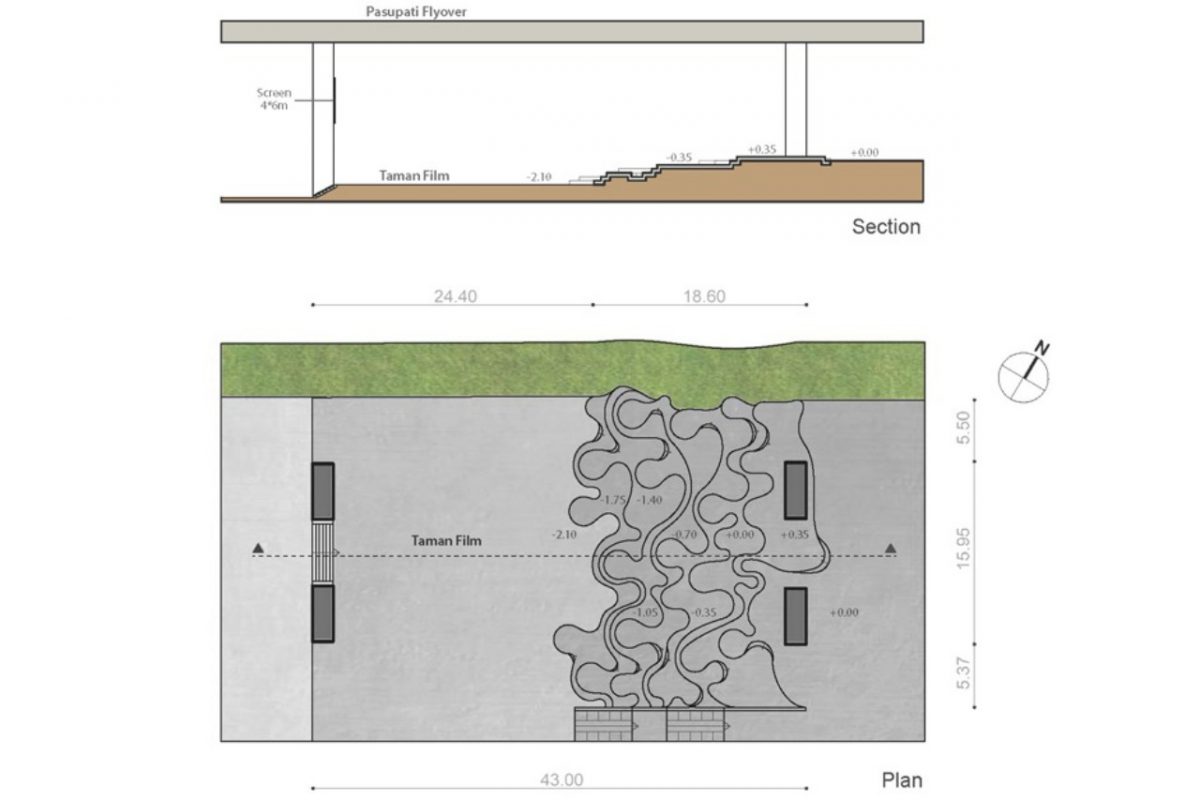
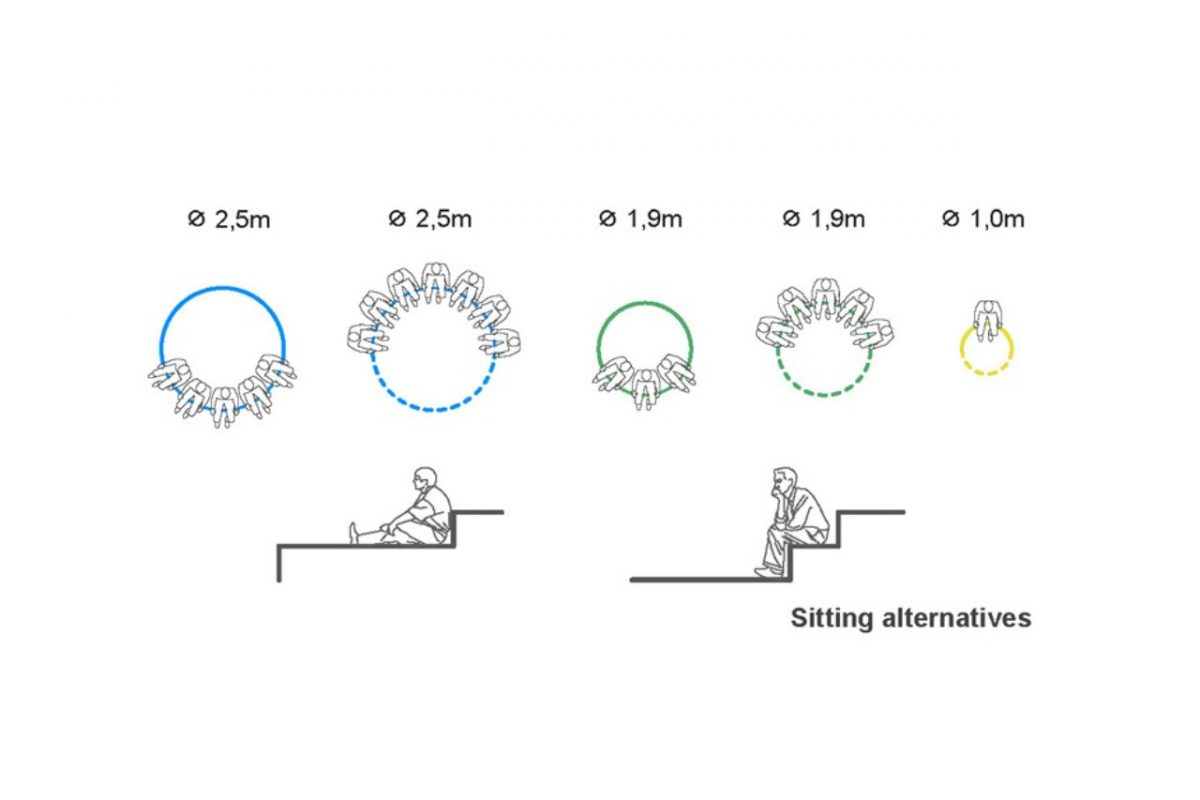
In terms of moving pictures, one can expect a diverse programme at Taman Film, with screenings ranging from local productions, news items, cartoons, to sports events, but also short films, festivals, and more. Anyone can use the space, as long as it is not for commercial purposes. The most spectacular use of Taman Film, however, took place when Persib Bandung, the local football club, won the Presidential Cup in 2015. On that evening, Taman Film was filled to the brim with thousands of spectators supporting their team. The next day, the park was somewhat damaged due to the sheer amount of people who attended. This led Mayor Ridwan Kamil to make a public statement via social media to remind citizens to take better care of Bandung’s public spaces.
The success of Taman Film is due to a magic mixture: the right combination of stakeholders, location, and design. SHAU believes that architects and designers have a role to play in convincing city government, users, communities and funders. The hope is that the ‘Taman Film effect’ will take place in many more cities across Indonesia and in other places with similar challenges.
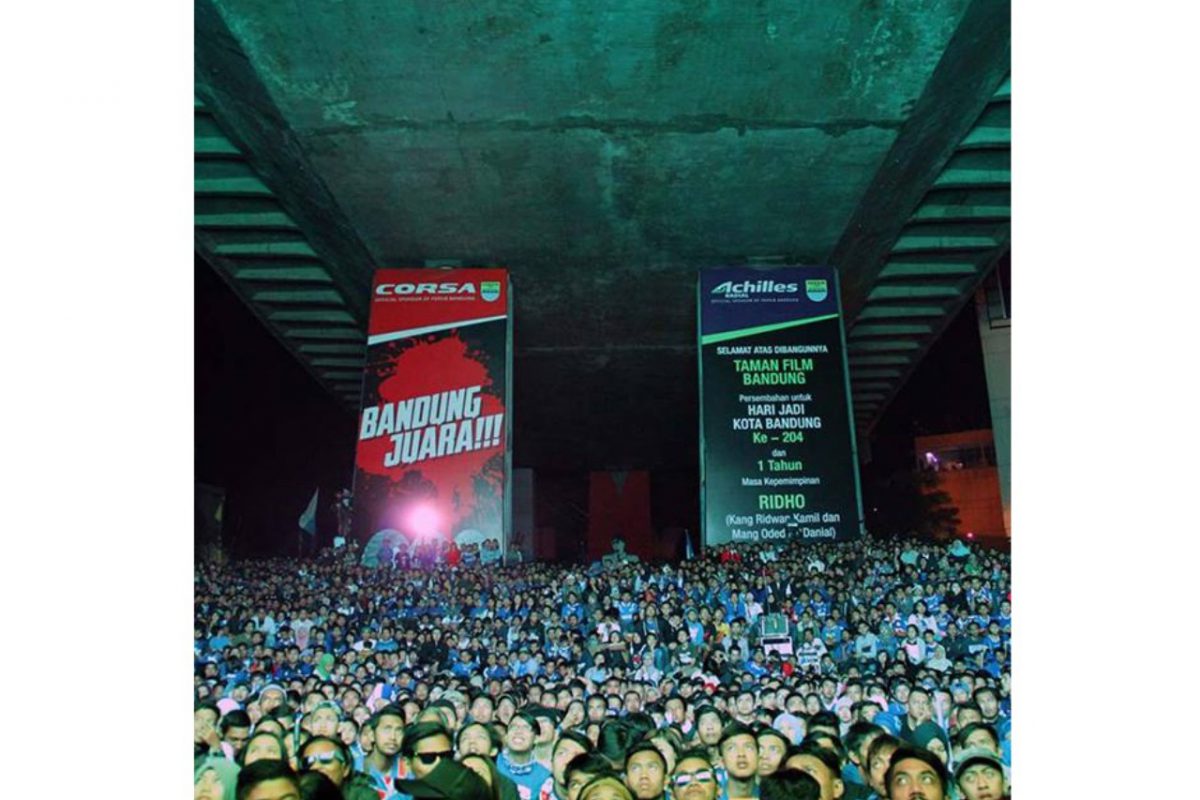
Do’s
Don’ts